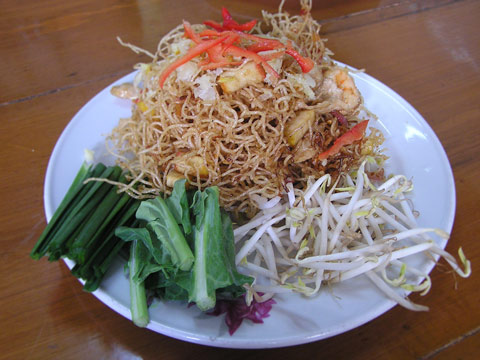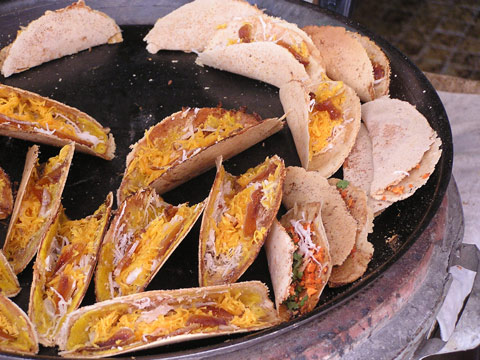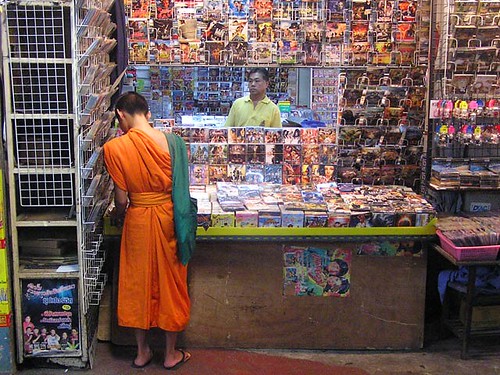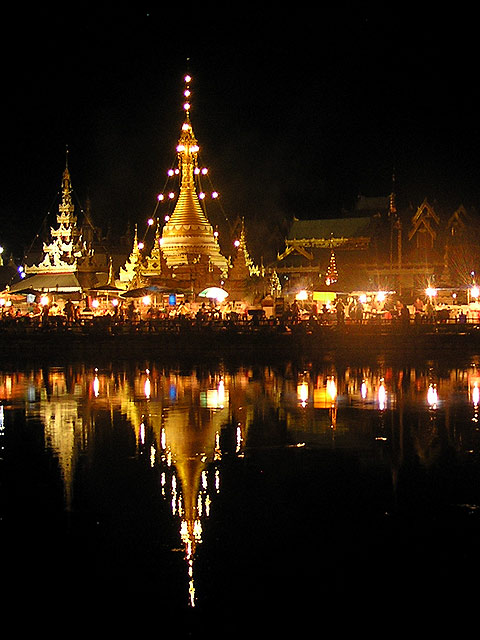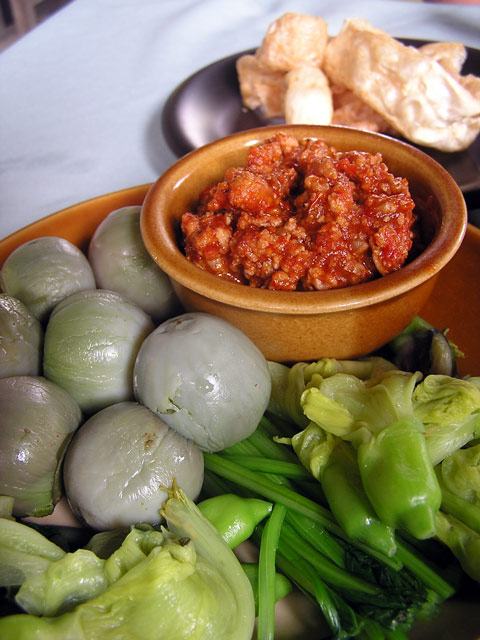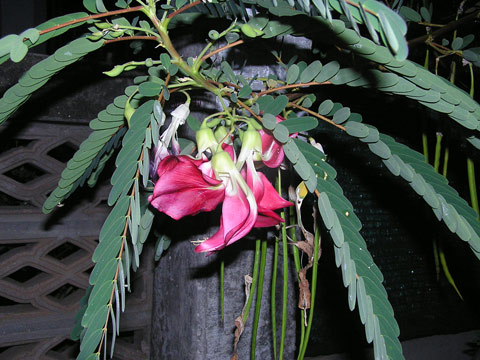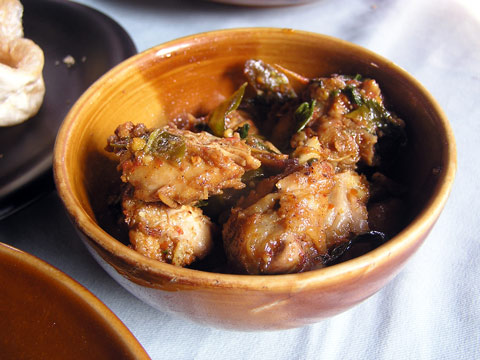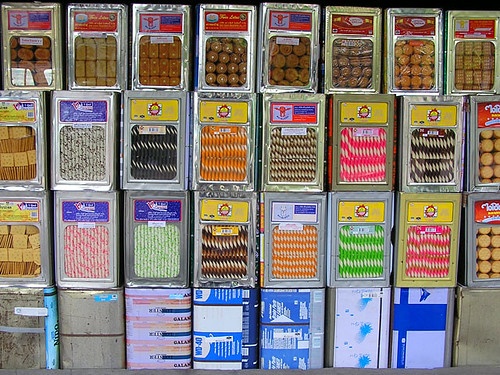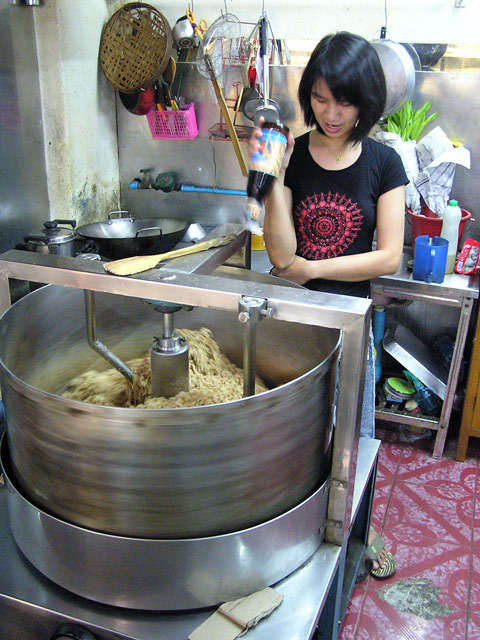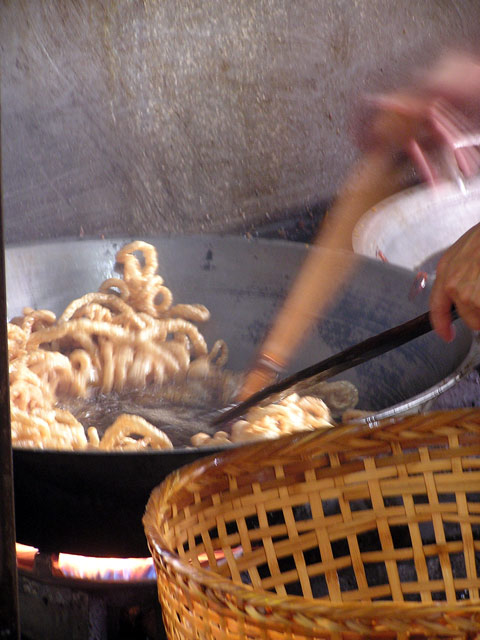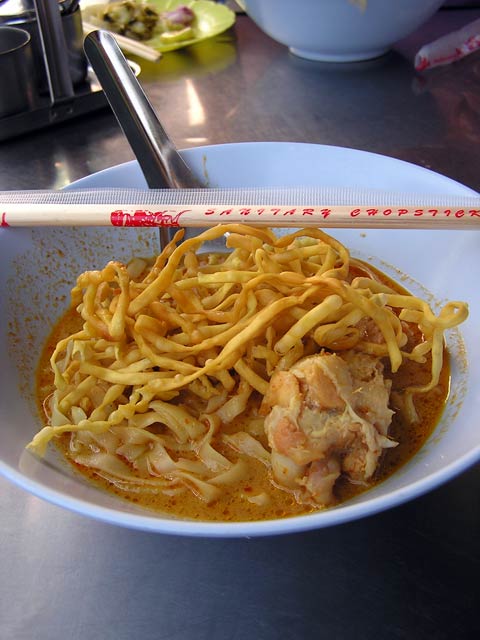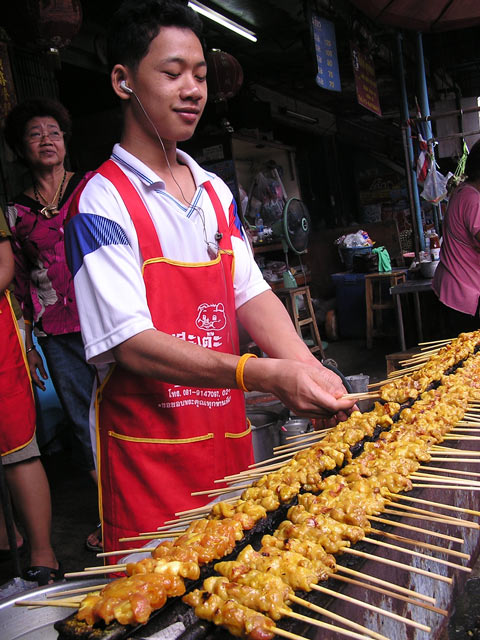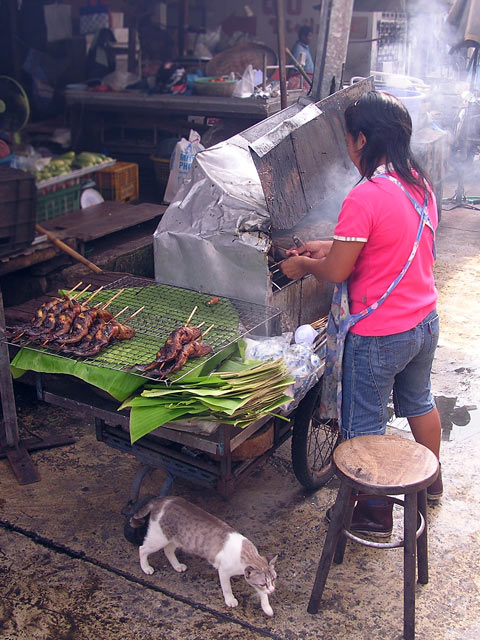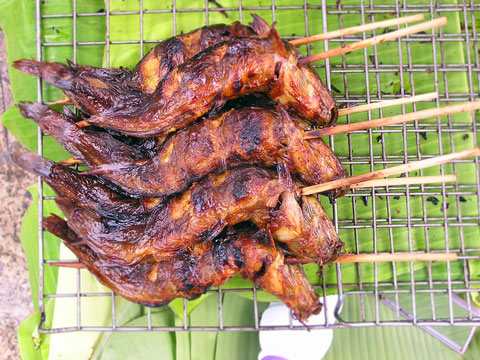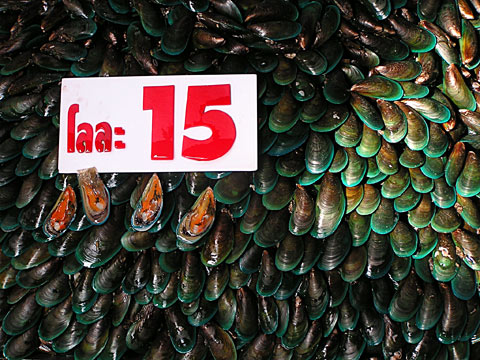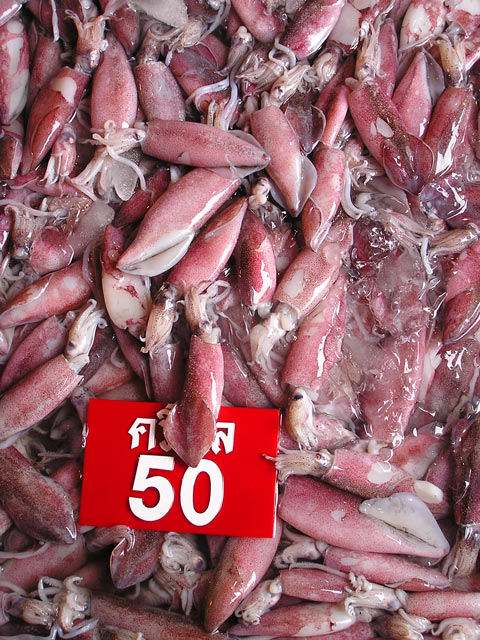Austin told me that there would be pig’s brain tom yam. An offal and coconut soup aberration buried in Bangkok’s inner suburbs within walking distance of some of the other rarer gems in Thailand’s food scene. A mere taxi ride from the Gut Feelings safehouse where I was holed up beside the pool. We’d conversed earlier, online, transcript as follows:
Austin: Fancy tom yam samong muu
pig brain tom yam?
me: It all looks great
That whole prion thing puts me off pig brain a little
Austin: prion?
me: They’re what causes mad cow disease. They collect in the brains/spinal cords of animals – although I have a feeling that pigs aren’t a problem. At least ones that haven’t been fed a steady diet of pork
Austin: i’m pretty sure the pigs here eat lotsa pork–the left over school lunch (which was mostly pork) is used as pig feed!
me: That’s bad news.
Austin: Yep
He’d somehow got the idea that I’m a massive offal fan. I do believe that if you’re going to eat meat then you may as well do your butcher a favor and eat the whole animal (just like most of the world’s population) but I’m not always seeking out the best pipe and lung dishes. His confusion of my love for innards was the result of me shooting some of the worst shots of Cambodian offal that I could find while he did his professional photographer “work” in Phnom Penh last year. After a while, I can’t take my own food photography with any seriousness.
After rallying Hock from Gut Feelings to form a mini Southeast Asian food blogging conference, we headed towards Chote Chitr.
Chote Chitr had gained a reputation as the restaurant that Bangkok food aficionados go when they want to show off the subtler side of Thai food to visiting journalists. The New York Times has previously given the hole-in-wall joint the thumbs up. The mee krob is a standout dish. Crispy and balancing sweet and sour on a knife’s edge without the tinned pineapple acidity and cheap starchy sauce that I associate with Chinese sweet and sour. According to Austin, the sour citrus note comes from the peel of the local som saa fruit. Hock mentioned that this was how he imagined Kylie Kwong would do sweet and sour pork. Older Bangkok cuisine seems to be more focussed on sweetness and balance rather than just the razor-sharp edge of chilli that cuts through more modern Bangkok fare.
Our stop for pig’s brain tom yam, the ostensible reason for swapping the sin of poolside sloth for freestyle gluttony, was fruitless. The store was fresh out of brains.
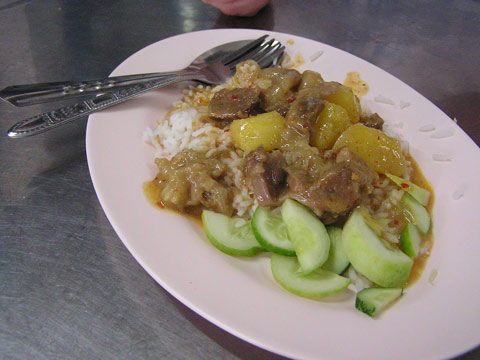
We regrouped and hit up Udom Pochana, a restaurant doing what Austin imagined was a Chinese chef’s version of an Indian curry, but somehow turned out much more like the Golden Curry-brand that Japanese people seem to love. It is something of a Thai rarity and appealing as a cultural artefact from a nation that otherwise cooks a mean curry but this dish ends up sweet and altogether a bit dull.
Next, Khanom Beuang Phraeng Nara on Thanon Phraeng Nara for khanom bueang . These sweet crispy taco-like shells are ubiquitous throughout Bangkok, normally filled with a saccharine meringue cream. These were a world apart, redolent with smoke from the charcoal brazier and filled with sweet duck egg paste, coconut meat and dried fruit. This, like Chote Chitr, are worth crossing oceans for. We discussed the possibility of renting a house in this neighbourhood, wondering if each Chinese shophouse had a spare room.
Pad see ew: the boat noodle. Along with char kway teow, this is my favourite fried noodle dish. The dish promotes the wok hei smoke flavour like few others. I took no notes on it and still have no idea what street it was on. With the tom yam with brains tip off, Austin had in his possession a map indicating that good streetside goat stew could be found at Ko Lun restaurant, near a morbidly obese dog on Thanon Mahanop.
The dog was easy to find; a possible result of its inability to move. Ko Lun’s goat stew in “red sauce” was only average, despite being paired with some piquant shreds of galangal on the side. My thought was that they were fattening up that dog with grim intent.
We ended the impromptu food crawl at a cafe where Austin ordered two of the most lurid Thai foods I’d seen: a glass of milk with red food coloring and toast with viscous tangerine goop. This is what he eats when he’s not trying to show off to the rest of the world that he is a mature adult, somehow a fitting seventh and final course
Locations:
Chote Chitr
146 Thanon Phraeng Phuthon
02 221 4082
10am-10pm
Khanom Beuang Phraeng Nara
Thanon Phraeng Nara
Ko Lun
Thanon Mahanop
